

FOREST RESTORATION TAKES SHAPE IN BRAZIL JANUARY/FEBRUARY 2023 • ARBORDAY.ORG
RAIN
ARBOR DAY FOUNDATION CHIEF EXECUTIVE, Dan Lambe
JOURNAL
AS THE NEW YEAR BEGINS, I find myself reflecting on my first year as chief executive of the Arbor Day Foundation. And one word keeps coming up: relationships. Relationships are what make the Foundation’s impact possible.

I am always in awe of our connections to our members and supporters, who show an unwavering commitment to trees year after year. Each and every one of you has helped us fulfill our tree planting mission over the past five decades — planting trees in your own yards and in forests in need around the world.
The relationships we’ve built with planting partners through the years are also an incredible driver for our work. These partners serve as the boots on the ground in forests and communities where trees are needed most.
Our connection with the USDA Forest Service allows us to support replanting efforts in National Forests throughout the U.S. that are struggling in the wake of wildfires, insect infestations, hurricanes, and other natural disasters. Our network of community tree planting organizations, known as the Alliance for Community Trees, helps the Foundation work with neighborhoods in meaningful ways to support local efforts to plant trees where they can do the most good. And our ever-growing connections with international tree planting partners are propelling our work into every corner of the globe — including the Amazon, which you will be reading more about in a moment.
When we all work together, that’s when the magic happens. That’s when we create a better, greener tomorrow through trees.
Planting Trees with Union Omaha Soccer Club
IN PROFESSIONAL SOCCER, every hard-fought goal is critical. But for the Union Omaha Owls, each goal means even more. Through their partnership with the Arbor Day Foundation, 100 trees are planted in the Nebraska National Forest every time they score.
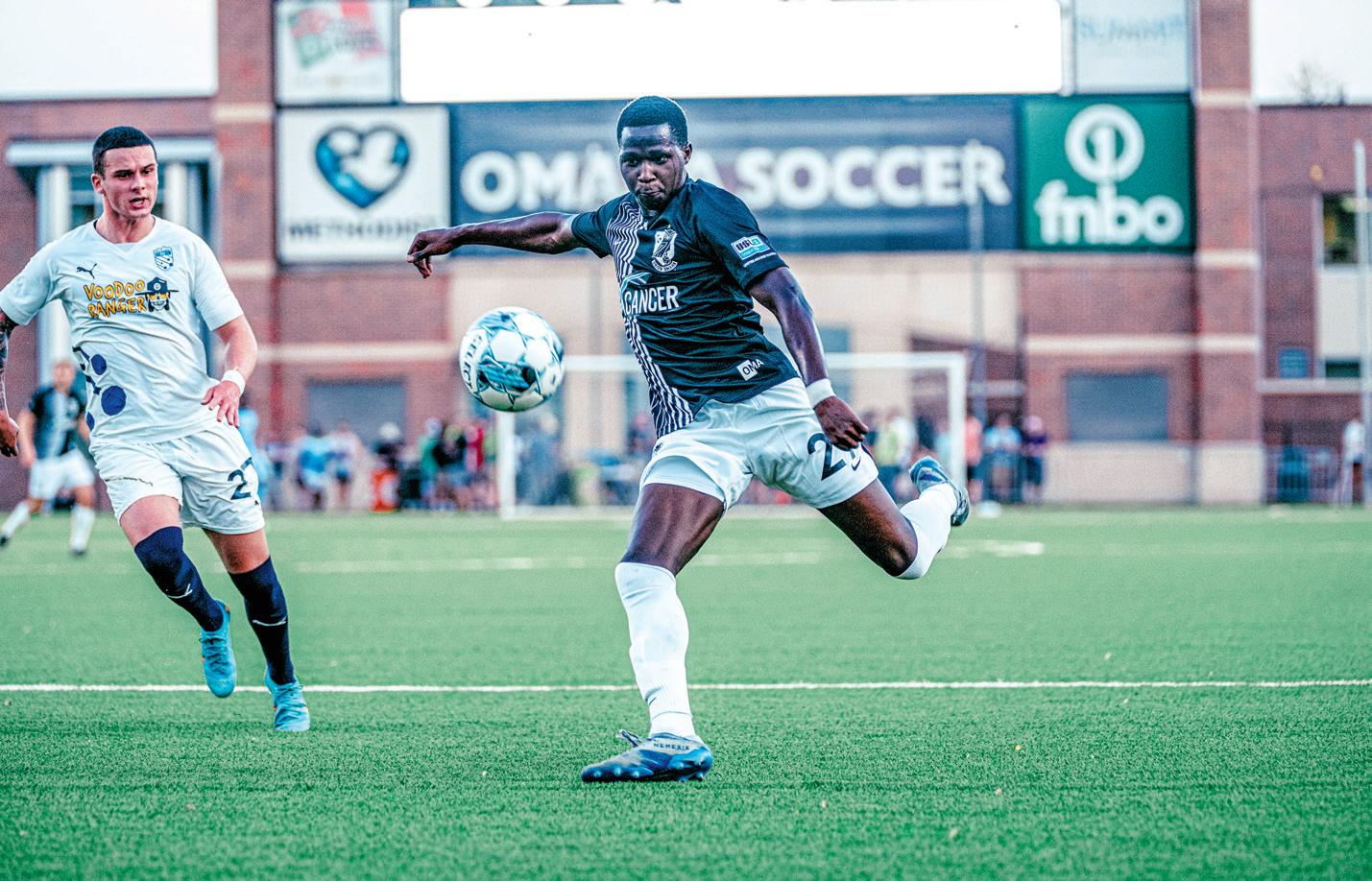
It’s a unique approach that ties the club’s success on the field to environmental impact. “At Union Omaha, we’re proud to represent the state of Nebraska both in professional soccer and in the community. Partnering with the Arbor Day Foundation to help reforest our state aligns perfectly with our mission and is something we’re privileged to be able to do,” said Fletcher Barry, representative for Union Omaha.
This is a relationship with local roots, giving the soccer club the ability to support tree planting in its home state — where it is desperately needed. Over the past 15 years, catastrophic wildfires have blazed through Nebraska National Forest’s Pine Ridge District, wiping out much of the area’s ponderosa pine stands. The intensity of these fires left large burn areas incapable of natural regeneration, and reforestation efforts supported by Union Omaha are critical to preserving the native landscape.
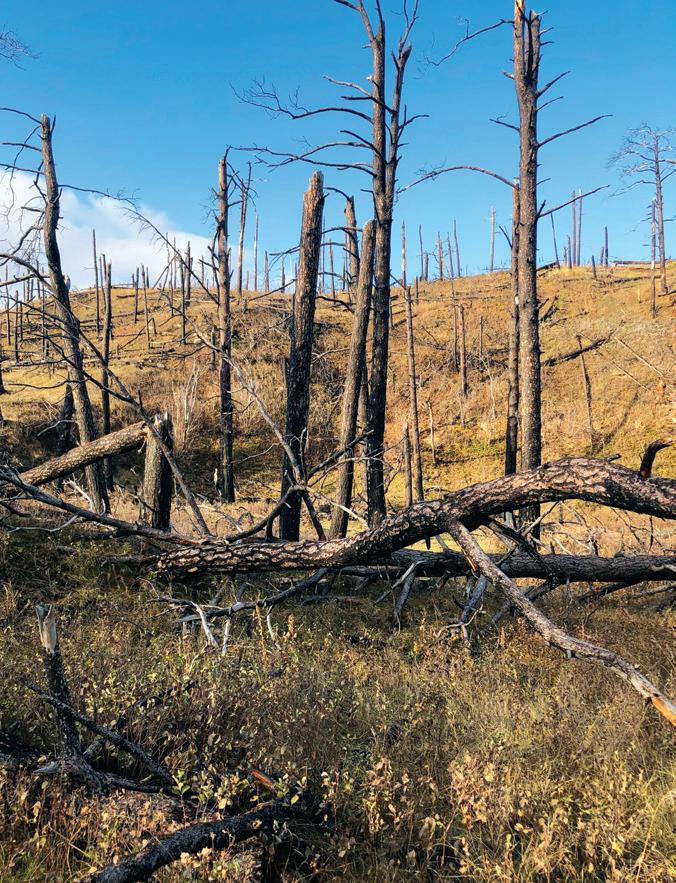
This is the kind of partnership that creates change — engaging fans in the importance of trees and making a difference for our planet.
Above: Every goal scored by Union Omaha becomes 100 trees planted.
At right: This partnership is helping to restore fire-ravaged regions of the Nebraska National Forest.
arborday.org
On the cover: Tree seedlings are prepped for distribution and planting in strategic areas of the Brazilian Amazon. A mix of native species are planted to best support the tree canopy and local communities.
2 ARBOR DAY • January/February 2023 • 888-448-7337 •
FOLLOW US AT facebook.com/arborday
ARBOR DAY
A unique partnership supports reforestation in the team’s home state
Nebraska City, Nebraska
New Outdoor Experiences at Arbor Day Farm
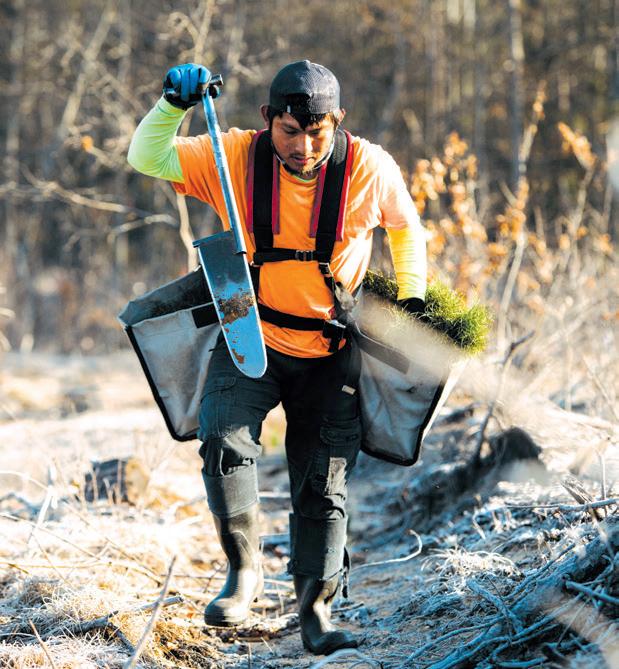
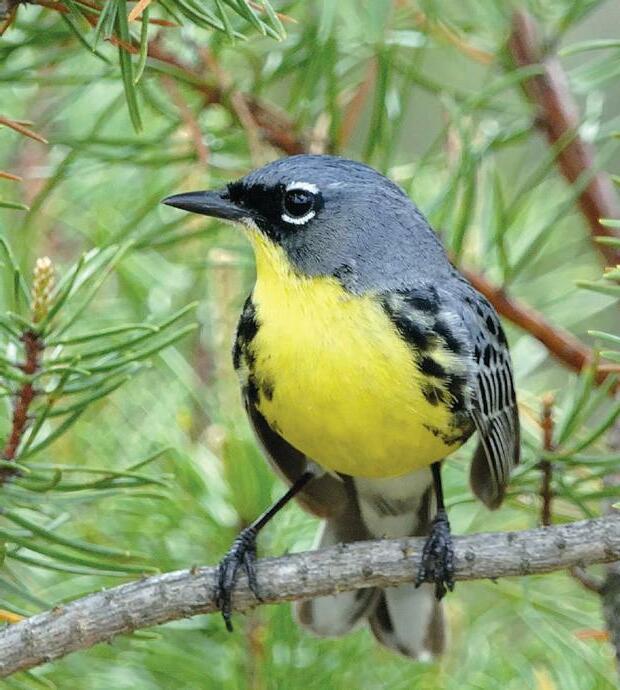
WITH 260 ACRES OF ROLLING HILLS AND TREES, Arbor Day Farm in Nebraska City, Nebraska, is the perfect spot to connect with nature.

The property recently unveiled two new outdoor experiences for visitors to enjoy — both within walking distance of Lied Lodge.
Harris Prairie
Along with adventuring through the forest, guests at Arbor Day Farm can now stroll through a beautiful tallgrass prairie.
Harris Prairie, located west of Lied Lodge, just finished its second growing season. It features more than 80 native plant species that were present at the farm before being lost to agriculture and orchard development in the early 1900s.

The prairie is named after Matt Harris, who served as CEO of the Arbor Day Foundation from 2014 to 2022. It has a mowed path and is a quarter-mile walk out and back. Along with its eye-catching flowers and grasses, the prairie is also located on the highest point on the property, allowing for scenic views of the entire farm.
The restoration was made possible with help from the Nebraska Game and Parks Commission, Diversity Farms, Prairie Plains Resource Institute, and the Nebraska Environmental Trust.
Council Rings
Two new council rings were also added to the farm this past spring.
Council rings are an outdoor seating concept championed by Danish architect Jens Jensen. They feature a circular stone bench, often situated around a fire. This design places everyone at the same level, inviting conversation and promoting greater connection.
“In this friendly circle, around the fire, man becomes himself. Here there is no social caste. All are on the
same level, looking each other in the face,” Jensen wrote in his 1939 book, Siftings
The first council ring is located directly behind Lied Lodge. From there, visitors can follow a trail through the hazelnut bushes to the second ring. At night, the path is lit up with solar lights.
Local community members played an important role in the project. Each council ring also features locally made Adirondack chairs, crafted from sustainable black locust wood. And the large metal fire bowl in the council ring closest to Lied Lodge was created by a steel maker in Omaha.
It was exciting to see these rings come together, and we can’t wait to see people gather around them for many evenings to come.
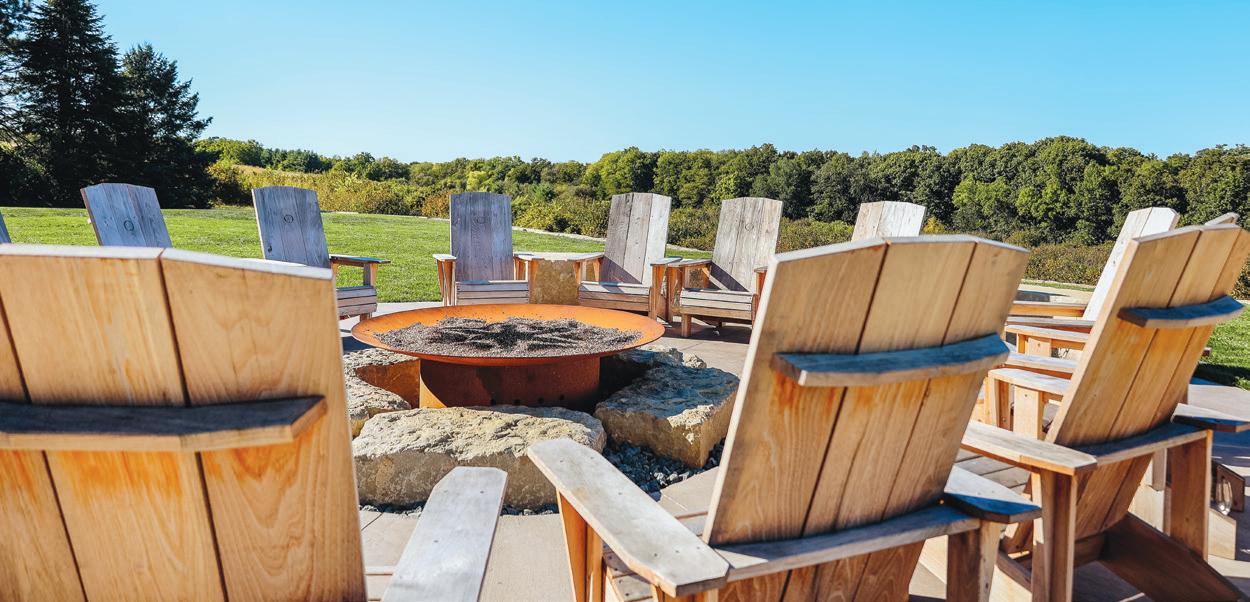
ARBOR DAY • January/February 2023 • 888-448-7337 • arborday.org 3 FOR RESERVATIONS TO STAY AT LIED LODGE: arbordayfarm.org • 800-546-5433
Restoring the Brazilian
Restoring the Brazilian
Work continues with local indigenous communities to preserve
Brazil is facing a crisis. Forest fires and deforestation have spiked in recent years, and the country is losing its rain forest canopy at an alarming rate. Among the most vulnerable are the indigenous communities that have historically lived in unison with the rain forest.
That’s why the Arbor Day Foundation is working with local tree planting partner Forest Trends and eight of the indigenous communities in the Brazilian Amazon to restore and protect this important ecosystem.
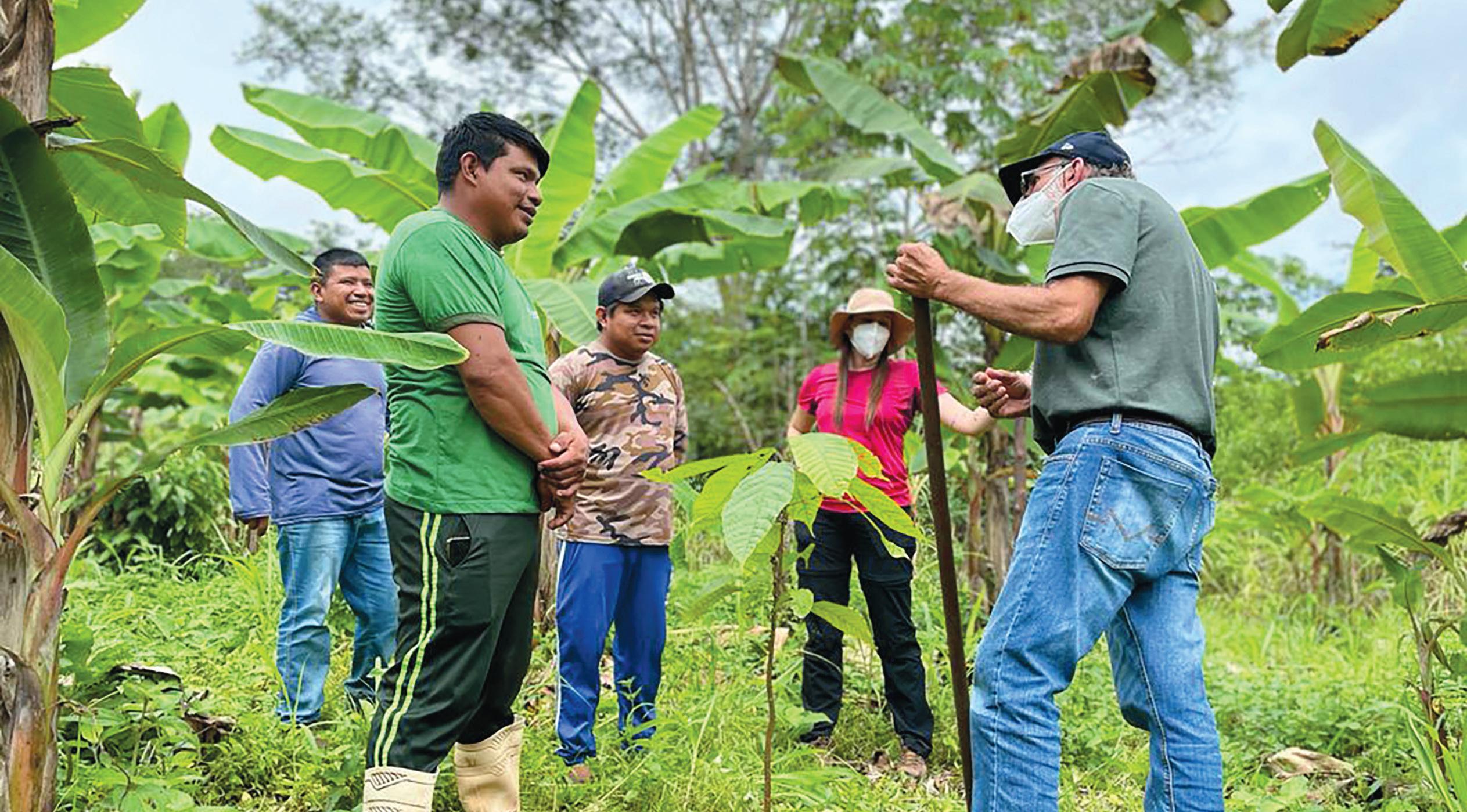
Work is currently underway on year three of a three-year effort to reforest areas that have lost tree canopy.
Local stewards looking for balance
The indigenous communities that make their home in the Amazon have been the greatest protectors and stewards of this land over the generations. They rely on the forest cover as a source of both food and income and are committed to restoring a healthy tree canopy.
But these people have had to struggle just to maintain their lands. “These indigenous lands, some
of them have areas degraded by former invaders before the demarcation process,” said Marcio Halla, an agronomist and project coordinator for Forest Trends. “The indigenous people in the Amazon, in Brazil … they have to struggle to get their territory recognized and demarcated by the government. The situation of illegal activities in indigenous lands — mining, logging, land grabbing — they are very serious problems.”
Eight of these communities connected with Forest Trends and the Arbor Day Foundation to plant trees in a way that will heal the land, benefiting the forest ecosystem and the people. According to Marcio, the strategy is to provide an agroforestry system near their villages. “We have a planning activity with each family to understand their ideas, their project, which kind of trees they want to have. And then we plant these trees with them, always prioritizing cacao, Brazil nuts, handicraft species, and acai,” he said.
Seed and seedling
As with many things in 2020, the global pandemic put a halt to planned seedling planting. “[We had] no access to the indigenous lands; they were totally
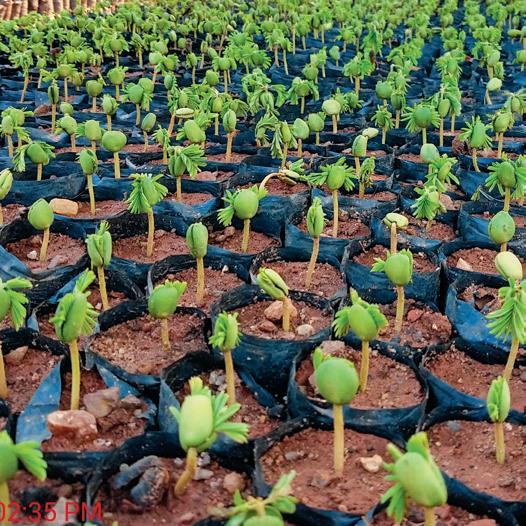
4 ARBOR DAY • January/February 2023 • 888-448-7337 • arborday.org
Far left: Local partners and indigenous communities are coming together to restore the rain forest canopy.


Center: Food security is an important aspect of this work.
Left: Planting efforts are engaging the next generation of tree planters.
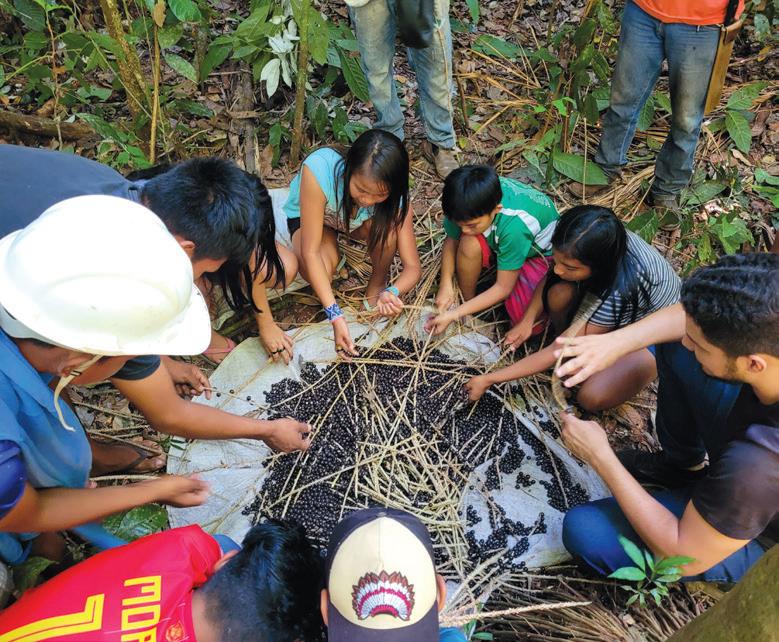
Below: Newly planted trees will grow quickly to support the region.
Amazon
Amazon
a lush forest ecosystem
closed. It was forbidden to go into the indigenous territories,” said Marcio. But in 2021, the project approach changed so that another rainy season wouldn’t go by without tree planting. Three tons of seed was sown across 40 hectares of degraded land. And four months later, that area was populated with seedlings.
Once restrictions were lifted, seedling planting could commence in full force. Hundreds of thousands of seedlings are being planted in accordance with the developed agroforestry plans. This approach of using both seeds and seedlings ensured that restoration work could continue and that momentum wouldn’t be lost.
Widespread impact
This work is about more than simply replacing trees — it is about life. The Brazilian Amazon is a place teeming with biodiversity. The villages near deforested sections, however, reported that there was no life in these degraded areas anymore. The birds, the animals, the insects … they were all gone. The trees being planted will once again restore a thriving rain forest ecosystem, bringing back the flora and fauna native to the area.
The Amazon is also home for many people who rely on the forest for survival. With a restored tree canopy comes greater food security and access to sustainable sources of income such as cacao, fruits, nuts, and raw materials needed for handicrafts.
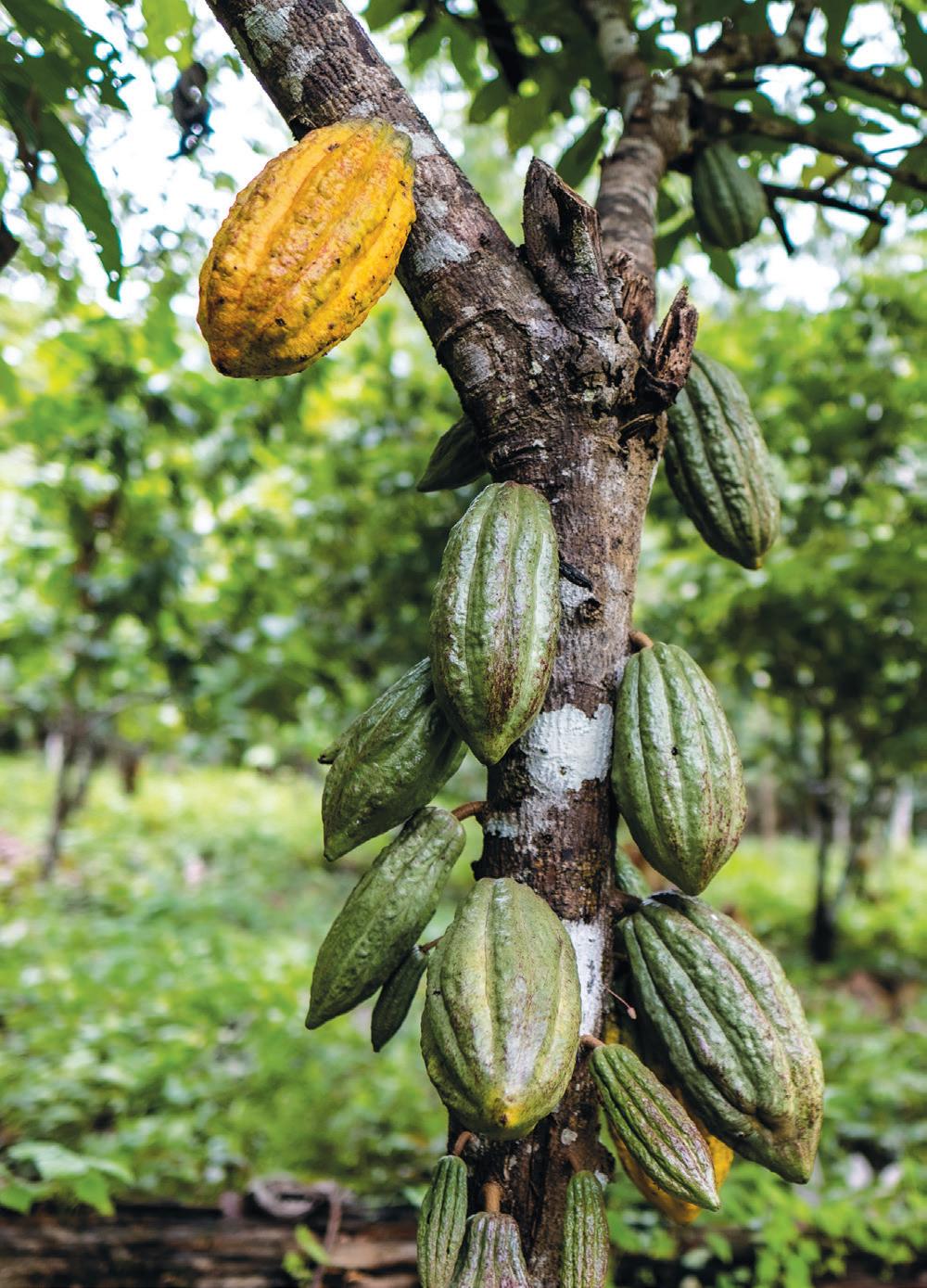

In addition, the trees are an important step in slowing the rate of climate change by actively removing carbon from the atmosphere as they grow. This means a more livable planet for all of us.
But the greatest impact of this project is yet to be realized. These efforts are fostering a strong culture of tree planting that will be passed down through the years. Each new generation will grow up in a community dedicated to actively restoring and protecting the rain forest.
The Arbor Day Foundation is proud to support the indigenous communities of Brazil as they plant trees and restore their rain forest lands. Thank you to our loyal members, donors, and partners who make this work possible. To learn more about tree planting efforts around the globe, visit arborday.org/efforts
ARBOR DAY • January/February 2023 • 888-448-7337 • arborday.org 5
Protecting the Kirtland’s Warbler

Once-endangered bird now thriving, thanks to reforestation efforts
IF THEY’RE LUCKY, visitors to Michigan forests might see a flash of yellow flit through the trees.
The colorful display belongs to the Kirtland’s warbler — one of the rarest songbirds in the world.
Half a century ago, this bird was on the brink of extinction. Just 167 pairs remained in the wild after losing a large portion of their forest habitat.
Today, thanks to widespread planting efforts, more than 2,300 Kirtland’s warblers are thriving in the Great Lakes region. They’re the first and only songbird to be removed from the endangered species list. And donors like you have played a critical role in this success.
Restoring Critical Forest Habitat

Kirtland’s warblers are native to central Michigan. They nest in large stands (160 acres or more) of young
jack pine trees, roughly five to 20 years old. Wildfires are a key part of this ecosystem, burning the older forest and clearing the way for the younger trees to grow.
But over time, humans stepped in to suppress these fires, limiting the growth of young jack pine forests. The warbler was placed on the endangered species list in 1967.
No time was wasted in conserving these beautiful birds. Reforestation efforts began as early as the 1970s, with both state and national agencies pitching in to help. In recent years, Arbor Day Foundation supporters have planted millions of new trees in Michigan in support of the warbler, contributing to one the greatest conservation wins of the decade.
Did You Know?
Becoming a monthly donor is the easiest and most effective way you can help us continue this important work all across the country. Visit arborday.org/newsletter and select “Monthly” to sign up today.
IRA Distributions: A Tax-Free Way to Care for the Earth
CURRENT TAX LAWS make it easy for you to support conservation through a traditional or Roth IRA. If you are 70½ or older (traditional IRA), or 59½ (Roth IRA), you can leverage your IRA to make tax-free contributions — up to $100,000 per year. Simply direct a distribution in the amount you choose to the Arbor Day Foundation, which will not be subject to income tax. And the distribution can be set as either a one-time or recurring gift.

This is a great solution if you do not need the additional income from your required minimum distributions, you want to give more than the deduction limit, or you live in a state with no charitable income tax deduction.
Not only do you avoid paying income tax on this distribution; you have the satisfaction of knowing that you have made a lasting contribution to our environment.
You can still use this giving strategy even if you are under 70½ years old without the tax-free benefit. Simply use your IRA distribution to make a charitable contribution after taxes.
For more details, please consult your professional financial advisor, visit arborday.org/plannedgiving, or email development@arborday.org.
TREE BASICS
Why Prune in the Winter?
During the winter months, it may seem like your trees don’t need any attention. However, this season is the very best time to do your pruning! Here are just a few benefits of pruning trees in winter.
n Better Visibility

In the winter, foliage isn’t an issue. You (or your arborist) will have a clearer picture of what branches need to be removed and which areas are diseased or problematic. Without leaves in the way, arborists can also perform structural pruning more easily and make more precise cuts.
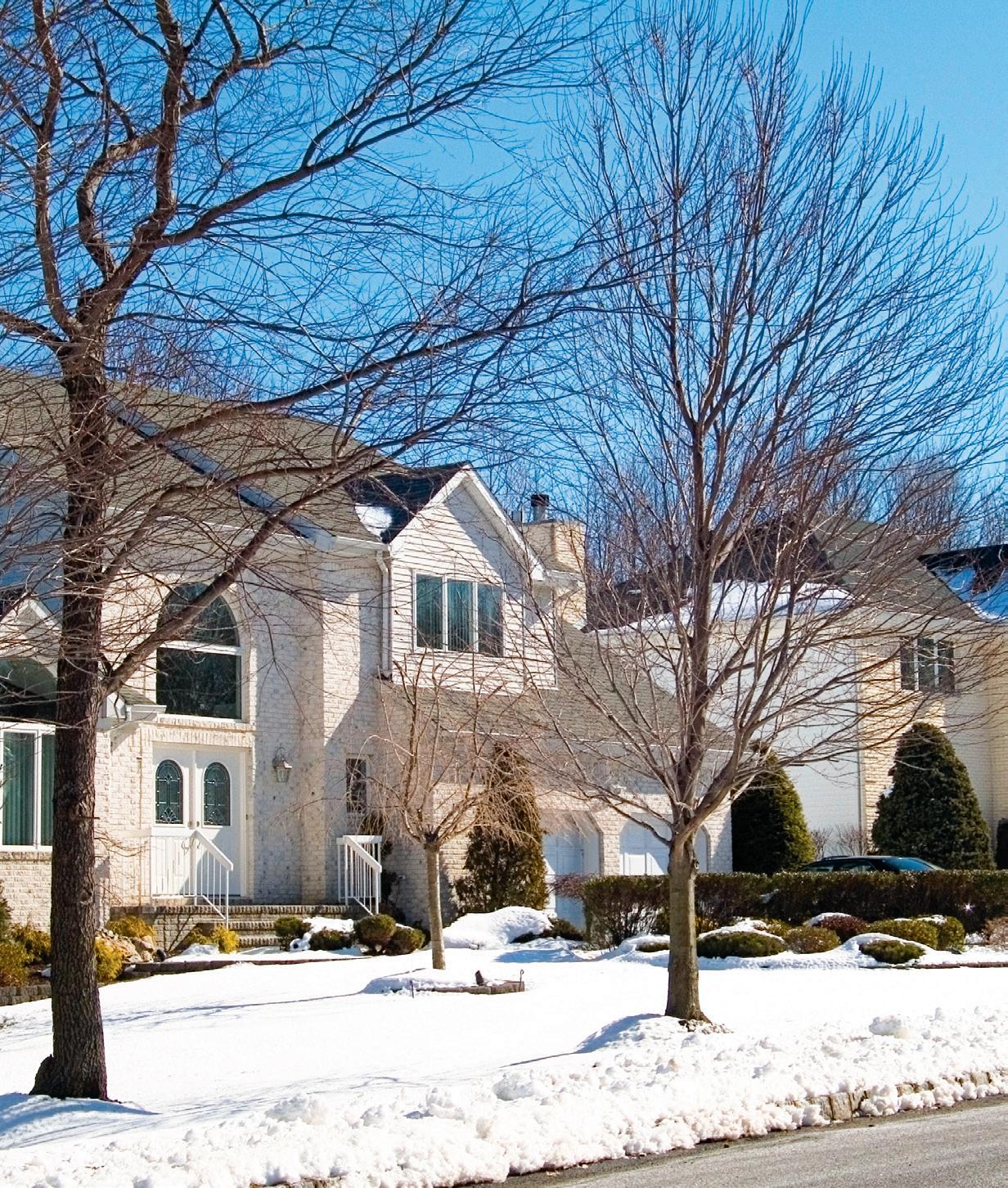
n Prevents Disease
During the warmer seasons, fresh cuts are more vulnerable to insects, which can spread tree-killing bacteria and fungi. Pruning during the dormant season helps prevent this from happening.
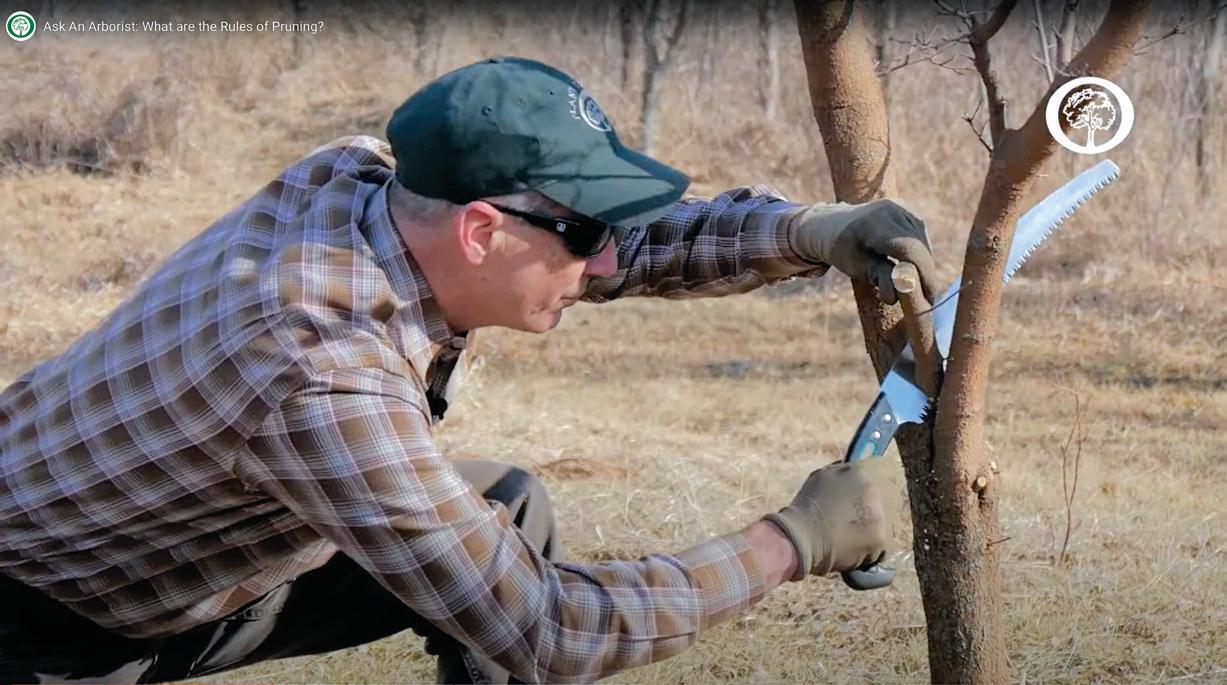
Some trees, like oaks, should only be pruned during the dormant season because they are especially susceptible to oak wilt disease, which is known to spread extremely fast in the spring and summer.
n Faster Healing Process
When you prune a tree, you are actually wounding it. Like people, trees need adequate time to recover from their wounds and bounce back. The dormant season, when trees are already at rest, is the best time for them to heal.
n Faster Growth
Proper pruning paves the way for healthy spring growth, giving your trees the best chance to thrive.
n Less Intrusive
If you’re on or near a public property, pruning in the winter means there will generally be less people outside to disturb. Garden beds also aren’t in bloom, reducing the impact of any falling branches.
n Protection from Harsh Weather
Removing weak branches gives trees more strength to withstand severe spring and summer weather.
ARBOR DAY • January/February 2023 • 888-448-7337 • arborday.org 7
View an in-depth pruning tutorial with Pete Smith, Arbor Day Foundation’s tree expert and Programs Manager, at arborday.org/pruningtutorial
A large and spectacular variety, the bur oak is a great choice for properties in need of dense shade. It also offers impressive longevity — with many trees living for 200 to 300 years.
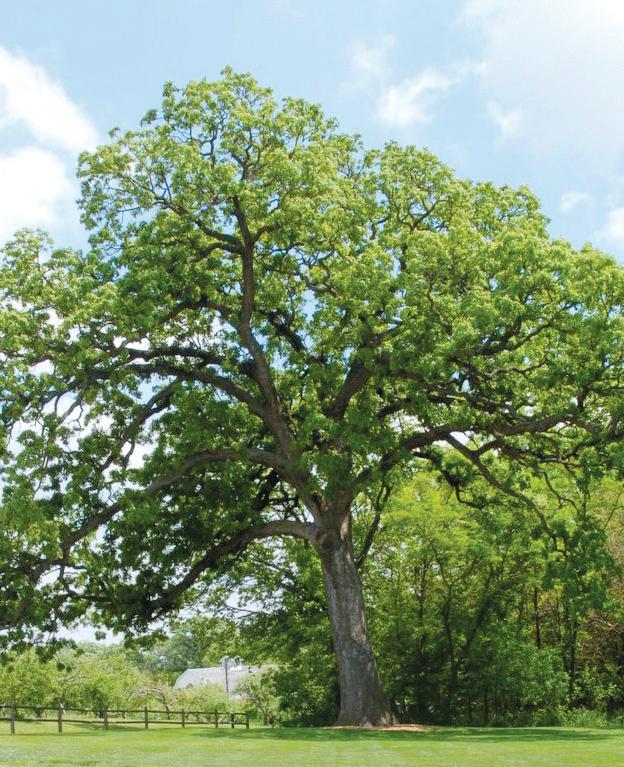
LEAVES: 6" to 12" long with five to nine rounded lobes. Dark green in color, turning yellow-brown in fall.

FRUIT: Large, green acorns, approximately 2" in diameter, with a fringed cap that extends halfway down.

GROWTH RATE: Slow.
WILDLIFE VALUE: Bur oak acorns are the preferred food for wood ducks, wild turkeys, white-tailed deer, rabbits, mice, squirrels, and other rodents.
PLANTING: Requires a spacious, sunny area. While the tree prefers moderate moisture, it has some drought tolerance. Suitable for hardiness zones 3 through 8.
To
An official publication of

We guarantee delivery of healthy trees to our members. Please check ordering deadlines and shipping dates at arborday.org/shipping. If you need to contact us about your trees, call 888-448-7337, email us at info@arborday.org, or drop us a note at Member Services, Arbor Day Foundation, 211 N. 12th St., Lincoln, NE 68508. We want your tree planting efforts to be successful!
© 2023 Arbor Day Foundation. The Foundation sometimes exchanges mailing lists with selected organizations with offers of interest to our members. If you do not want your name included, just write, email, or call Member Services and tell us not to exchange your name.

50136001
purchase or learn more about this tree and others, visit arborday.org/buroak or scan this QR code.






















